Your cart is currently empty!

Experience the Thrill of the Outdoors: A DIY Colorado Elk Hunt Adventure

Embarking on a DIY elk hunt in the beautiful wilderness of Colorado is an adventure like no other. The thrill of tracking and stalking these majestic creatures, setting up camp in the heart of nature, and the satisfaction of a successful hunt are experiences that will stay with you for a lifetime. As an avid hunter, I recently had the opportunity to go on my own DIY elk hunt in Colorado, and it was an adventure I will never forget.
Key Takeaways
- DIY Colorado Elk Hunt Adventure is an exciting and challenging experience for hunters.
- Proper gear and equipment are essential for a successful elk hunt.
- Tracking and stalking elk in the wild requires patience, skill, and knowledge of their behavior.
- Setting up camp in the wilderness requires preparation and attention to detail.
- Topographical maps and GPS navigation are crucial for navigating the wilderness and finding the best hunting spots.
Preparing for the Hunt: Gear and Equipment Essentials
When it comes to preparing for a DIY elk hunt, having the right gear and equipment is essential. From clothing and footwear to hunting tools and camping gear, every item plays a crucial role in your success. It’s important to choose gear that is durable, lightweight, and suited for the rugged terrain of the Colorado wilderness.
Investing in quality hunting boots with good ankle support is crucial for navigating through rough terrain. Layered clothing is also essential to stay warm during early morning and late evening hunts when temperatures can drop significantly. Additionally, having a reliable backpack with enough storage space for all your gear is essential.
The Thrill of the Chase: Tracking and Stalking Elk in the Wild
One of the most exhilarating aspects of a DIY elk hunt is the thrill of tracking and stalking these elusive creatures in their natural habitat. It requires patience, observation skills, and a deep understanding of elk behavior. Tracking elk involves looking for signs such as tracks, droppings, rubs on trees, and fresh bedding areas.
Once you’ve located a herd or an individual elk, stalking becomes crucial. This involves moving silently and slowly towards your target while using natural cover to remain undetected. It’s important to be aware of wind direction to avoid being detected by their keen sense of smell. Stalking requires careful planning and execution to get within shooting range without alerting the elk.
Setting Up Camp: Tips for a Successful Outdoor Experience
| Topic | Metric |
|---|---|
| Location | Distance from nearest town/city |
| Altitude | |
| Weather forecast | |
| Tent | Size (number of people it can accommodate) |
| Material (waterproof, breathable, etc.) | |
| Sleeping bag | Temperature rating |
| Shape (mummy, rectangular, etc.) | |
| Cooking | Cooking method (stove, fire, etc.) |
| Cooking utensils (pots, pans, utensils, etc.) | |
| Food | Meal plan (breakfast, lunch, dinner, snacks) |
| Food storage (bear canister, hanging, etc.) | |
| Water | Water source (stream, lake, etc.) |
| Water treatment (filter, purifier, etc.) | |
| Navigation | Map and compass |
| GPS device |
Setting up camp properly is essential for a successful DIY elk hunt. Choosing the right campsite is crucial, and it’s important to consider factors such as proximity to water sources, accessibility, and safety. Look for a flat area with natural cover to set up your tent and ensure you have enough space for cooking and relaxing.
When it comes to camping gear, invest in a high-quality tent that can withstand the elements and provide adequate shelter. A warm sleeping bag and sleeping pad are also essential for a comfortable night’s sleep. Additionally, having a reliable camping stove, cookware, and food storage containers will make meal preparation easier.
Navigating the Wilderness: Topographical Maps and GPS Navigation
Navigating the wilderness is a crucial skill for any DIY elk hunter. Topographical maps are an invaluable tool for understanding the terrain, identifying potential hunting areas, and planning your routes. Learn how to read these maps and familiarize yourself with key features such as contour lines, elevation changes, and water sources.
In addition to topographical maps, GPS navigation devices can be extremely helpful in ensuring you stay on track during your hunt. These devices provide real-time location information, waypoints, and tracking features that can help you navigate through unfamiliar territory. However, it’s important to have a backup plan in case your GPS device fails or loses signal.
The Art of Calling: Elk Hunting Strategies and Techniques
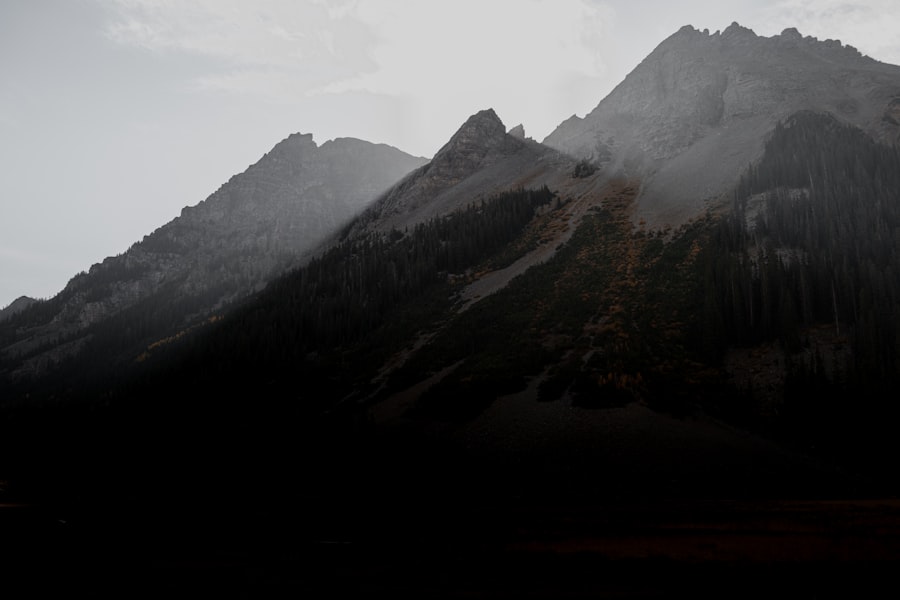
Calling is an essential skill for any elk hunter. It involves mimicking the sounds that elk make to attract them or communicate with them. There are various types of elk calls, including bugles, cow calls, and calf calls. Each call serves a different purpose and can be used in different hunting scenarios.
To effectively use elk calls, it’s important to practice before the hunt. Familiarize yourself with the different sounds elk make and learn how to replicate them using your calls. Understanding the timing and rhythm of elk vocalizations is crucial for convincing them that you are a fellow elk. Additionally, learning to read their body language and respond accordingly can greatly increase your chances of a successful hunt.
Safety in the Wild: Precautions and Emergency Preparedness
Safety should always be a top priority when embarking on a DIY elk hunt. The wilderness can be unpredictable, and it’s important to take precautions and be prepared for emergencies. Before heading out, make sure to inform someone of your hunting plans, including your expected return date and location.
Carrying essential safety equipment is crucial. This includes a first aid kit, emergency shelter, fire-starting tools, a compass, and a whistle for signaling for help. It’s also important to have a basic understanding of wilderness first aid and know how to handle common injuries or emergencies that may arise.
The Rewards of the Hunt: Processing and Cooking Elk Meat
One of the most rewarding aspects of a successful elk hunt is the opportunity to process and cook the meat. Elk meat is lean, flavorful, and highly nutritious. Properly processing the meat ensures its quality and taste.
After harvesting an elk, it’s important to field dress it as soon as possible to cool the meat down and prevent spoilage. This involves removing the internal organs and skinning the animal. Once field dressed, the meat can be quartered and packed out.
When it comes to cooking elk meat, there are various delicious options. Elk steaks can be grilled or pan-seared for a tender and flavorful meal. Ground elk can be used in burgers, chili, or meatballs. It’s important to cook elk meat to medium-rare or medium doneness to preserve its tenderness.
Conservation and Stewardship: Responsible Hunting Practices
Responsible hunting practices are essential for the preservation of wildlife and their habitats. As hunters, it’s our responsibility to ensure the sustainability of elk populations and the ecosystems they inhabit. This includes following hunting regulations, practicing ethical shot placement, and respecting the land.
Additionally, participating in conservation efforts and supporting organizations that work towards wildlife preservation is crucial. This can involve volunteering for habitat restoration projects, donating to conservation organizations, or participating in wildlife management programs.
Memories to Last a Lifetime: Capturing the Adventure through Photography and Videography
Capturing the adventure of a DIY elk hunt through photography and videography allows you to relive the experience and share it with others. Invest in a good quality camera or action camera that is durable and waterproof. Learn how to use different camera settings and techniques to capture stunning photos and videos.
When taking photos or videos, focus on capturing the beauty of the landscape, the excitement of the hunt, and the camaraderie between fellow hunters. Don’t forget to take photos of the harvested elk as well, as these will serve as lasting memories of your successful hunt.
In conclusion, a DIY elk hunt in Colorado is an adventure that offers unparalleled thrills and rewards. From preparing for the hunt with the right gear and equipment to tracking and stalking elk in the wild, every aspect of the experience is filled with excitement. Setting up camp properly, navigating the wilderness, and practicing responsible hunting practices are essential for a successful and safe hunt. The memories created during a DIY elk hunt will last a lifetime, and capturing them through photography and videography allows you to share the adventure with others. So, grab your gear, head to Colorado, and embark on your own DIY elk hunt adventure.
If you’re interested in hunting and looking for more tips and tricks, you might want to check out this article on “How to Hunt Rabbits with a .22” from Old Oak Syndicate. It provides valuable insights and techniques for successfully hunting rabbits using a .22 caliber rifle. Whether you’re a beginner or an experienced hunter, this article offers helpful advice to improve your skills and increase your chances of a successful hunt. So, if you’re ready to take on the challenge of rabbit hunting, click here to read the full article.
FAQs
What is a DIY Colorado elk hunt?
A DIY Colorado elk hunt is a hunting trip where the hunter plans and executes the hunt themselves, without the assistance of a guide or outfitter.
What are the requirements for a DIY Colorado elk hunt?
To hunt elk in Colorado, hunters must have a valid Colorado hunting license and an elk tag. Non-residents must also purchase a big game hunting license. Hunters must also follow all Colorado hunting regulations and laws.
When is the best time to go on a DIY Colorado elk hunt?
The best time to go on a DIY Colorado elk hunt is during the fall, typically from late August to early November. This is when elk are in their mating season, making them more active and easier to locate.
What equipment do I need for a DIY Colorado elk hunt?
Hunters will need a rifle or bow, appropriate ammunition or arrows, hunting clothing, boots, binoculars, a backpack, and camping gear if planning to stay overnight in the wilderness.
Where can I hunt elk in Colorado?
Elk can be found throughout Colorado, but some of the best areas for hunting include the San Juan Mountains, the Flat Tops Wilderness, and the White River National Forest.
Is a DIY Colorado elk hunt safe?
Hunting can be dangerous, but as long as hunters follow all safety guidelines and regulations, a DIY Colorado elk hunt can be a safe and enjoyable experience. It is important to be aware of your surroundings, carry appropriate safety gear, and always practice safe firearm handling.

Herb has been a longtime lover of the outdoors. Whether it be hunting, camping, fishing or just getting outside to reset. Proud father and animal lover. Bourbon anyone?

by
Tags:
Comments

Categories
- Big Game Hunting (301)
- Deer (202)
- Reviews (3)
- Shooting (16)
- Slingshot (1)
- Small Game Hunting (42)
- Upland Hunting (126)
- Waterfowl Hunting (3)

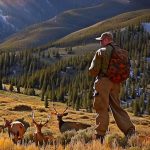
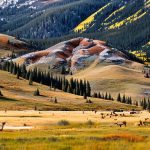
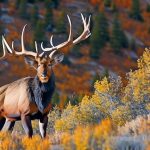
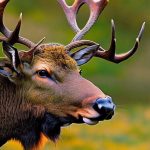
Leave a Reply